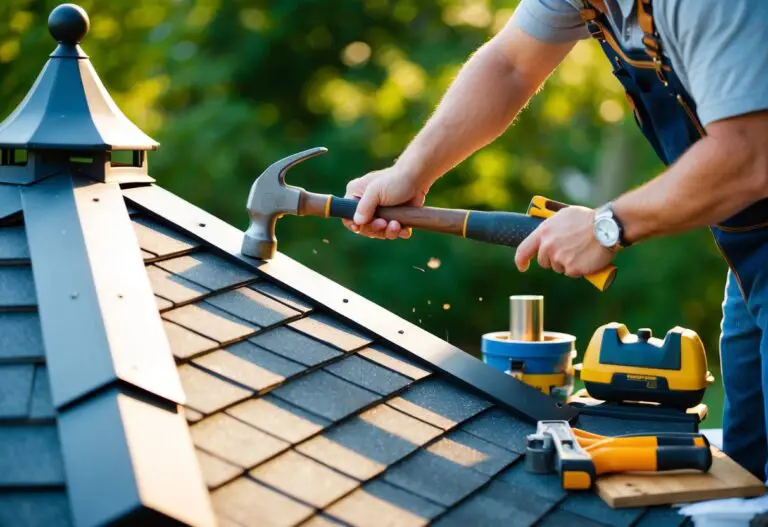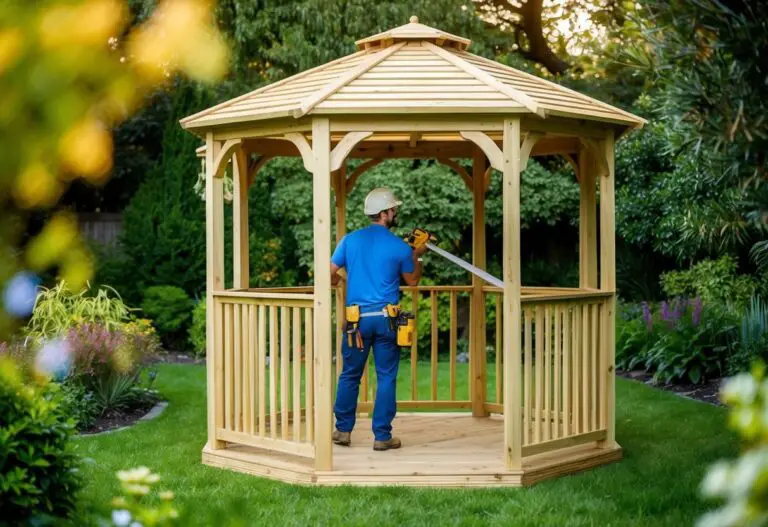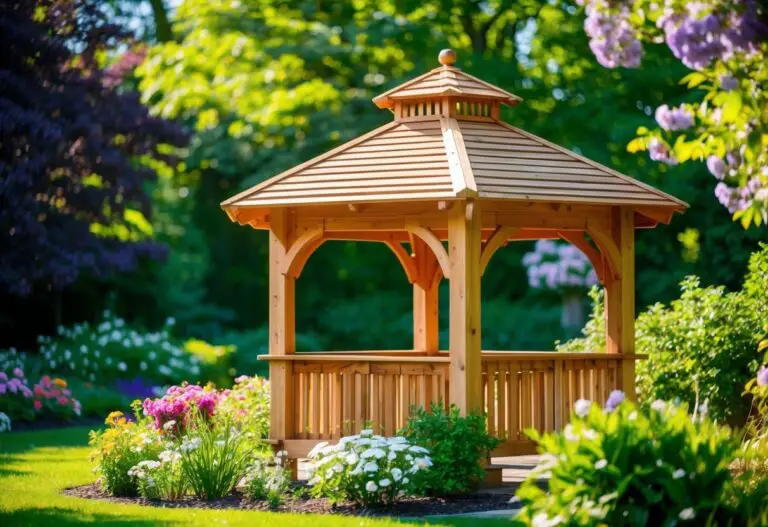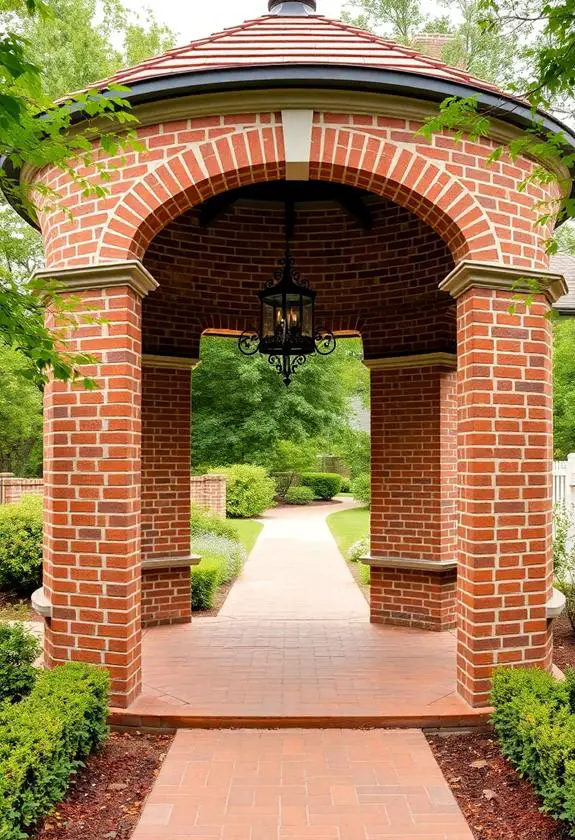Building a gazebo can transform your outdoor space into a cozy retreat. But before you start dreaming about relaxing summer evenings, it’s crucial to get the foundation right. Gazebo footings are the hidden heroes that keep your structure stable and safe.
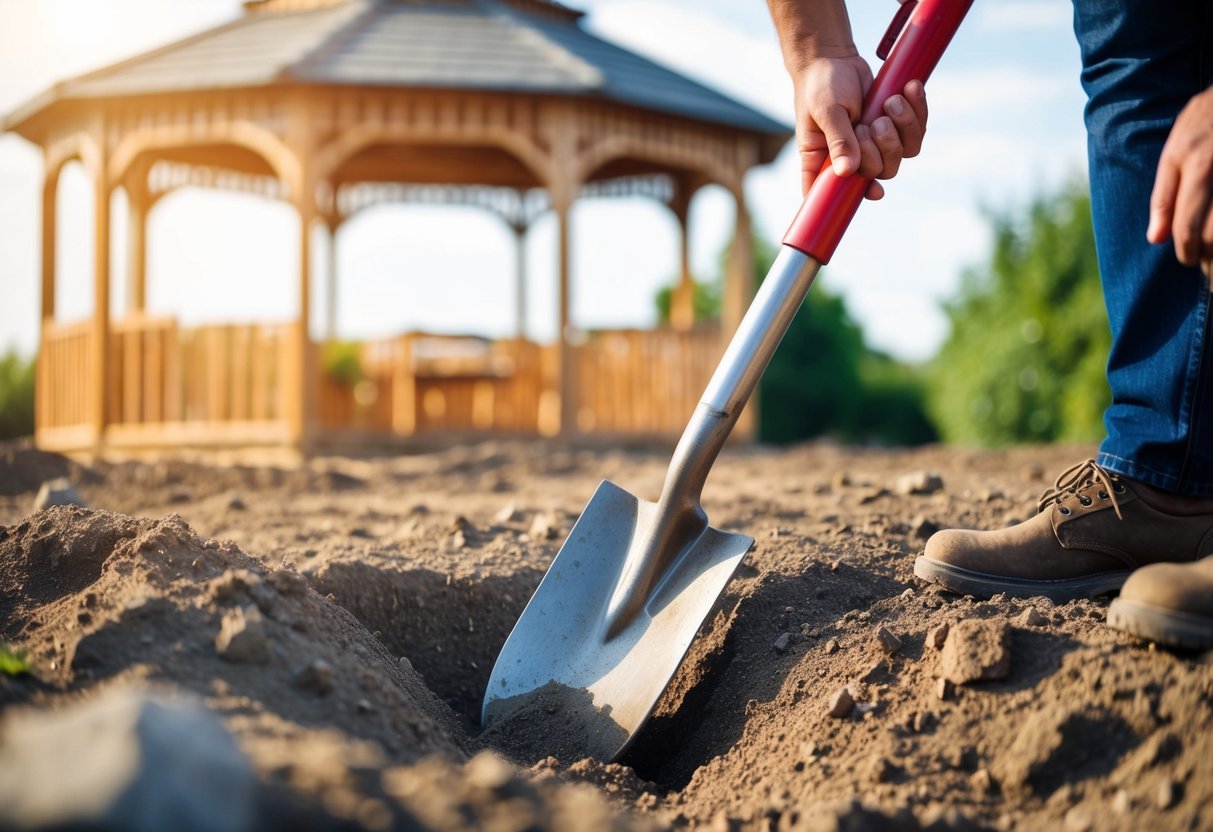
For most gazebos, footings should be at least 36 inches deep. This depth ensures your gazebo can withstand wind, rain, and even frost heave in colder climates. The exact depth may vary based on your local building codes and soil conditions.
Your gazebo’s size and material also play a role in determining footing depth. A larger or heavier structure might need deeper footings to provide enough support. By taking the time to install proper footings, you’re setting the stage for years of enjoyment in your new outdoor living space.
Key Takeaways
- Gazebo footings typically need to be at least 36 inches deep for stability
- Local climate, soil type, and gazebo size affect required footing depth
- Proper footings ensure your gazebo remains safe and sturdy for years
Factors To Consider
When planning your gazebo footings, you need to think about a few key things. Soil type is a big one. Sandy soil might need deeper footings than clay.
The climate where you live matters too. If it gets cold, you’ll want to dig below the frost line. This keeps your gazebo stable when the ground freezes and thaws.
How big is your gazebo? Bigger structures need deeper footings to stay sturdy. The same goes for gazebos made of heavy materials like stone.
Don’t forget about water! Good drainage helps prevent erosion around your footings. You might want to do a soil test to check for any drainage issues.
Local building codes are important too. They often have rules about how deep footings should be. It’s best to check these before you start digging.
Is your gazebo anchored or freestanding? Anchored ones might need different footing depths. This helps them resist strong winds and stay put.
Remember, getting the footings right is key to a long-lasting gazebo. Take your time to consider all these factors before you build.
Typical Footing Depths
When you’re planning to build a gazebo, getting the footings right is key. For most wood or metal gazebos, you’ll want to dig about 2-3 feet deep. This depth works well in many areas.
If you’re putting up a bigger gazebo, you might need to go deeper. Around 4 feet or more is common for larger structures. It gives them extra support.
A good rule to follow is to make sure your footings go below the frost line. This depth changes depending on where you live. It keeps your gazebo stable when the ground freezes and thaws.
Here’s a quick guide for different gazebo types:
- Standard gazebos: 2-3 feet
- Large gazebos: 4+ feet
- Areas with deep frost: Match or exceed frost line depth
Remember, soil type matters too. Sandy soil might need deeper footings than clay. If you’re not sure, it’s best to ask a local expert. They can help you pick the right depth for your area.
Concrete is a popular choice for gazebo footings. It’s strong and lasts a long time. Some people use gravel or concrete blocks for smaller gazebos. But for most, a solid concrete footing is the way to go.
Steps To Install Footings
Ready to build your gazebo? Let’s start with the footings. These are crucial for a sturdy structure.
First, mark the spot for your gazebo. Use stakes and string to outline the area. This helps you visualize the layout.
Now it’s time to dig. Make holes wider than your posts. The depth depends on your local frost line. Check with your county for specific requirements.
Add some gravel to the bottom of each hole. This helps with drainage and keeps your footings dry.
Next, build forms to hold the concrete. You can use Sonotubes for this step. They’re easy to work with and create neat, round footings.
Don’t forget to add rebar. It gives your footings extra strength. Place it in the forms before you pour concrete.
Finally, it’s concrete time! Fill the forms and let it cure. This usually takes about a week.
Remember, if you’re not comfortable with DIY, there’s no shame in getting professional help. They have the tools and know-how to get the job done right.
Benefits Of Proper Footing Depth
When you install a gazebo with the right footing depth, you’re setting yourself up for success. Let’s look at some key advantages:
Stability is a big plus. Your gazebo will stand firm, even on windy days or when lots of people are inside. No wobbling or swaying to worry about!
Durability is another win. Proper footings keep your gazebo from sinking or shifting over time. This means it’ll look great and work well for years to come.
You’ll also boost safety. A well-anchored gazebo is less likely to tip over or collapse. This gives you peace of mind when you’re relaxing or entertaining.
Here are some more benefits:
- Protects against frost heave in cold climates
- Helps distribute the weight evenly
- Prevents water damage to the structure
- Makes your gazebo more resistant to earthquakes
By taking the time to get the footing depth right, you’re making a smart choice for your outdoor space. It’s an investment that pays off in the long run.
Maintenance Tips
Regular checks keep your gazebo footings in top shape. Look for cracks, shifts, or erosion around the base. You’ll want to catch any issues early.
Give those anchors some attention too. Tighten them up if they’ve loosened over time. This helps keep your gazebo stable and safe.
Water can be tricky. Make sure it flows away from your footings, not towards them. Good drainage stops water from weakening the foundation.
Clean around the footings now and then. Remove leaves, dirt, or debris that pile up. This lets you spot problems more easily.
In winter, be careful with de-icing products near the footings. Some can damage concrete over time. Stick to sand for traction instead.
Paint or seal exposed concrete every few years. This protects it from weather and wear. Choose products made for outdoor use.
If you notice any big changes or damage, call a pro. They can fix issues before they get worse. Your gazebo will thank you!
Frequently Asked Questions
Gazebo footing depth can be tricky to get right. Here are some common questions about determining the proper depth for your gazebo footings.
Can I use a calculator to determine the right depth for my gazebo footings?
You can use online calculators to estimate footing depth. These tools factor in your location, soil type, and gazebo size. But they’re just a starting point. It’s best to check with a local expert or building department for the most accurate depth recommendation.
Do local building codes affect how deep my gazebo footings need to be?
Yes, building codes often set minimum depths for gazebo footings. These rules vary by location. Some areas require deeper footings to account for frost lines. Others may have less strict rules. Check with your local building department before you start digging.
Is it possible to have a solid footing for a gazebo without digging?
You can build a gazebo without deep footings in some cases. Options include:
- Surface-mounted footings for small, lightweight gazebos
- Concrete pads or existing patios as a base
- Helical piers that screw into the ground
These methods work best for smaller structures in areas with stable soil. For larger gazebos or those in harsh climates, digging footings is usually safer.
